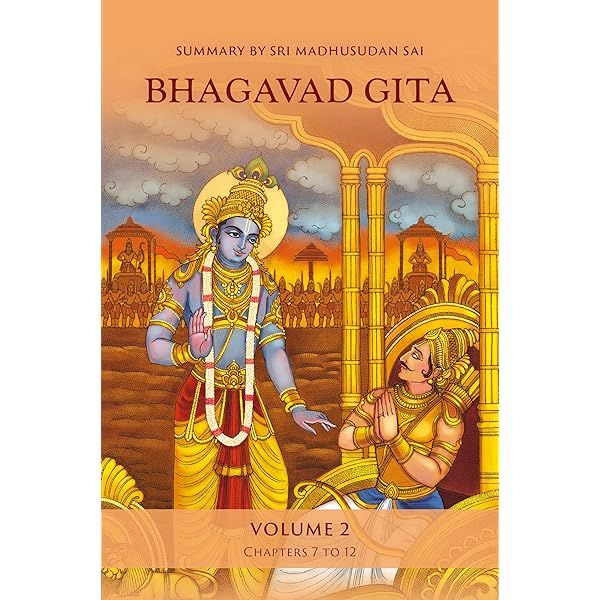Chapter XVII — The Bhagavad-Gita
byChapter XVII begins with Arjuna raising a thoughtful concern. He wonders what becomes of people who act out of faith without strictly following scriptural rules. Krishna responds with a detailed explanation that faith itself is shaped by one’s inner qualities—what he calls the Gunas: Sattva, Rajas, and Tamas. Those with a sattvic nature develop faith in pure, uplifting things that lead toward wisdom and harmony. Rajasic individuals are drawn to restless desires, often seeking power or control in their worship. Tamasic faith tends to focus on dark, misguided practices, often involving harmful rituals or blind superstition. Each path of faith mirrors the person’s internal disposition.
Krishna emphasizes that the essence of a person’s devotion can be seen in their everyday choices, not only in temples or rituals. Even in eating, the Gunas are present. People aligned with clarity prefer fresh, wholesome food that supports well-being. The passionate chase flavor and excitement in food but may suffer later from restlessness or imbalance. In contrast, those governed by ignorance may choose stale, overcooked, or unclean food that dulls both the body and mind. Food becomes not just fuel but a reflection of consciousness. Every meal, when chosen with awareness, becomes a form of self-care and spiritual discipline.
Sacrifices and rituals, too, fall under these three qualities. When done sincerely, without a desire for personal gain, a sacrifice is sattvic and brings inner peace. Rajasic sacrifices, on the other hand, are often done for fame, status, or the praise of others. These rituals may appear noble but lack purity of heart. The tamasic type is performed in careless, thoughtless ways—without reverence, knowledge, or proper intent. These acts are discouraged, as they offer no real benefit to the soul or to the world. Krishna is clear that true worship must flow from an honest heart, not from social pressure or personal pride.
Krishna also addresses austerity and charity, explaining that their value depends on the mindset of the one performing them. Austerity practiced with humility and a desire for inner growth is sattvic. When done to gain admiration, it becomes rajasic and loses much of its spiritual worth. If austerity leads to self-harm or stems from delusion, it is tamasic and harmful. Similarly, charity done with no expectation of reward and given to the right person at the right time is considered pure. When given with conditions or pride, charity loses its nobility. And charity given with contempt or to unworthy causes falls under ignorance, benefiting neither the giver nor the receiver. These distinctions help align outer actions with inner integrity.
Throughout this chapter, Krishna’s message is consistent: the quality of action matters more than the action itself. True spiritual progress depends not on rigid rules, but on the intention and clarity behind each thought and deed. A person’s inner disposition—whether it leans toward light, passion, or darkness—affects every aspect of their life. This includes not just religious rituals, but daily choices like what to eat, how to speak, and how to treat others. Even habits that seem small can reflect deeper truths about one’s spiritual path. Awareness of these subtle influences allows a person to live more mindfully and align with their highest nature.
As the chapter concludes, Krishna gives a unifying principle that ties together all aspects of faith and conduct. The sacred syllable “Om,” followed by “Tat” and “Sat,” represents the eternal truth and the essence of all righteous action. These sounds are invoked in spiritual rituals and remind one to act with sincerity, without attachment. By remembering these divine sounds, individuals can purify their intentions and stay connected to a higher purpose. Krishna encourages people to perform their duties without ego and to let go of the desire for results. This leads not only to spiritual success but to lasting peace and contentment.
Chapter XVII serves as a spiritual compass, guiding readers to look beyond appearances and understand the spirit in which all actions are undertaken. Whether through food, rituals, charity, or silence, Krishna teaches that every choice is an opportunity to move toward enlightenment or slip into confusion. He does not condemn any path outright but instead offers a clear mirror to reflect the deeper forces within each individual. By recognizing and refining these qualities, a person gradually transforms their faith into a vehicle for liberation.

